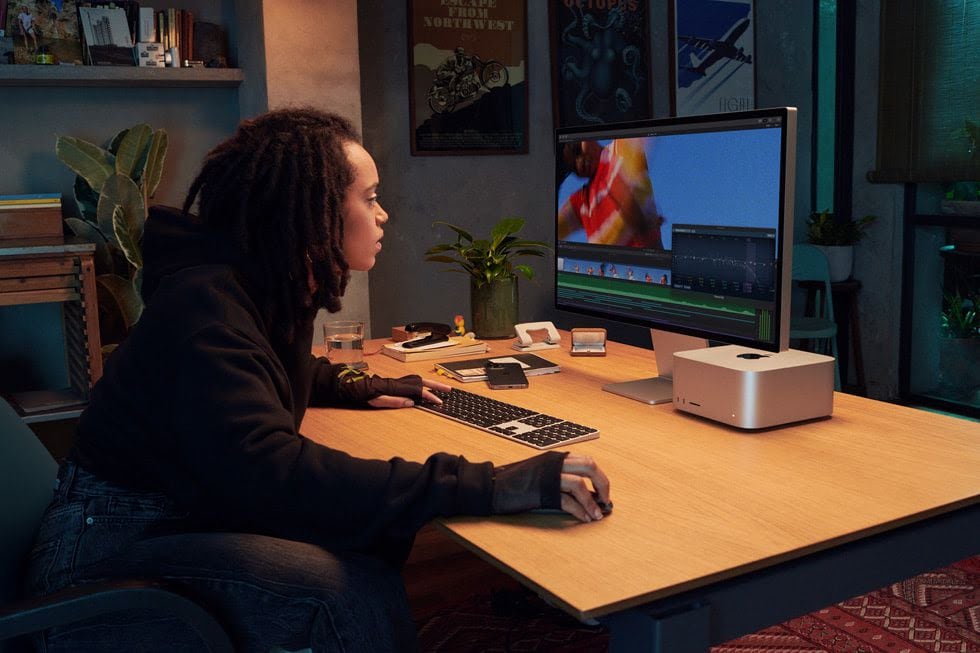
The Universal Control feature came with the macOS 12.3 or later update and anyone who has it can set it up with a few simple steps. It is a tool that allows you to control different devices wirelessly.
With Apple's tool, you can move an item between an iMac, MacBook Pro or iPad in multitasking mode and control everything with the same mouse and keyboard without having to change and use the accessories assigned to each device.
This is a polished level between software and hardware that for now only Apple users can take advantage of. If you have a Magic Keyboard for an iPad Pro, you can use that accessory's keyboard and touchpad to control your Mac.
Before you start configuring Universal Control, you must confirm that your Mac has macOS 12.3 or later, while iPad must be version 15.4 or later, and devices must have the same Apple ID started. It should also be noted that devices must be within 30 feet of each other with Wi-Fi, Bluetooth and Handoff enabled. (Transfer can be enabled from the General Settings section on both macOS and iPadOS.) Up to three devices can be used with Universal Control.

- Open System Preferences on Mac.
- Choose Screens.
- Click Universal Control at the bottom of the Screens menu.
- Check the box Allow the cursor and keyboard to move between any nearby Mac or iPad.
- Check the box to push through the edge of a screen to connect a nearby Mac or iPad.
- Open configuration.
- Choose Generals.
- Select AirPlay and transfer.
- Enable Cursor and Keyboard.

- Once the feature has been enabled on both Mac and iPad, the two devices must be placed next to each other.
- Move the cursor past the left or right edge of the screen in the same direction as the iPad or Mac you want to pair with.
- You should see an animation on that other device that shows the Mac's cursor “pushing” on the screen. Continue moving the cursor in the same direction and Universal Control will be activated.
If your mouse doesn't line up where you want it while moving between your Mac and iPad (or other Mac), you can adjust the position of the secondary device in macOS System Preferences.
- Open System Preferences and click Displays.
- Move the secondary iPad or Mac screen up or down (or left to right and vice versa) until it is exactly as desired.

- MacBook introduced in 2016 or later
- MacBook Pro released in 2016 or later
- MacBook Air released in 2018 or later
- Mac mini released in 2018 or later
- iMac released in 2017 or later, plus iMac (Retina 5K, 27-inch, Late 2015)
- iMac Pros
- Mac Pro released in 2019 or later
- Mac Studio
- iPad Pro (all models)
- iPad (6th generation) or later
- iPad Air (3rd generation) or later
- iPad mini (5th generation) or later
(With information from EP and The Verge)
KEEP READING
Últimas Noticias
Debanhi Escobar: they secured the motel where she was found lifeless in a cistern
Members of the Specialized Prosecutor's Office in Nuevo León secured the Nueva Castilla Motel as part of the investigations into the case

The oldest person in the world died at the age of 119
Kane Tanaka lived in Japan. She was born six months earlier than George Orwell, the same year that the Wright brothers first flew, and Marie Curie became the first woman to win a Nobel Prize

Macabre find in CDMX: they left a body bagged and tied in a taxi
The body was left in the back seats of the car. It was covered with black bags and tied with industrial tape
The eagles of America will face Manchester City in a duel of legends. Here are the details
The top Mexican football champion will play a match with Pep Guardiola's squad in the Lone Star Cup

Why is it good to bring dogs out to know the world when they are puppies
A so-called protection against the spread of diseases threatens the integral development of dogs




